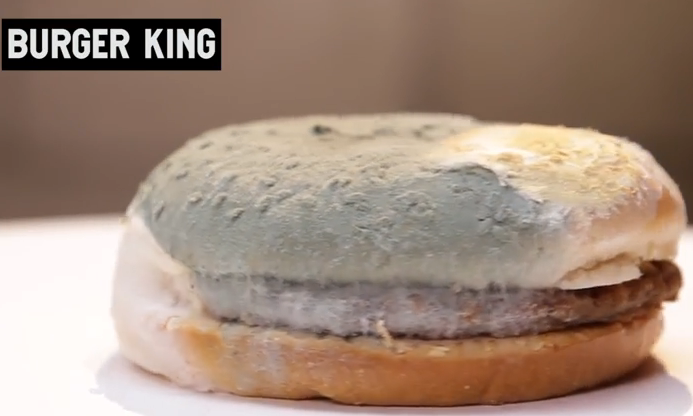All-American Burger Experiment: What Happens To Your Best Fast Food Burger When Left In A Jar For 30 Days

Chances are most of us have succumbed to the mouth-watering allure of meaty fast food burgers more times than we’re proud of. We have sacrificed nutritional value — and our waistlines — for the affordability, availability, and convenience of America’s fast food chains. As the fast food giant McDonald’s launched its “Our Food. Your Questions” campaign earlier this week, BuzzFeedBlue conducted the all-American burger experiment in the YouTube video “How Fast Do Burgers Age?”
Seven burgers from seven different fast food chains, including McDonald's, Burger King, Wendy's, Carl's Jr., Jack in the Box, In-N-Out, and Umami Burger were each placed into their own glass jar for a month. BuzzFeed expected to see what commonly happens to food that’s left unrefrigerated for 30 days — to look unappetizing with mold. In reality, all burgers should look unpleasant and unable to be stomached after a month because it is a natural process of decomposition.
All of the fast food burgers, minus one, were covered in mold after 30 days. From Wendy’s to In-N-Out, mold could be spotted on the surface of the food with gray fur, fuzzy green dots, and even white dust on the cheese. According to the U.S. Department of Agriculture (USDA), when a food shows heavy mold growth, “root” threads have invaded it deeply. This can increase the possibility of poisonous substances contained in and around these threads that could spread throughout the food.
The McDonald’s cheeseburger was the only one from the seven fast food giants that did not change in its physical appearance. There was no mold, no rot, or anything. The burger looks the same on day 30 as it did on day one. McDonald’s burgers seem to be immune to the natural aging process of foods, but why?
On McDonald’s Canada website, Laura B asked: “How is it that a McDonald’s burger does not rot?” Dr. Keith Warriner, program director at the University of Guelph's Department of Food Science and Quality Assurance suggests the burgers do not rot because they are laden with chemicals.
“In the example of a McDonald’s hamburger, the patty loses water in the form of steam during the cooking process. The bun, of course, is made out of bread. Toasting it reduces the amount of moisture. This means that after preparation, the hamburger is fairly dry. When left out open in the room, there is further water loss as the humidity within most buildings is around 40 percent.” The burger simply dries out and does not rot since there is a lack of moisture or high humidity.
Interestingly, the other burgers undergo the same cooking process, so why did they decay so much more than the McDonald’s hamburger patty? Melanie Warner, author of the book Pandora's Lunchbox: How Processed Foods Took Over the American Meal, conducted several food experiments earlier this year and found some other fast foods like chicken sandwiches and American cheese can pass the mold-free test. These items are small in size and have a relatively large surface area, which helps it lose moisture very fast.
Standing the test of time in this case is not a necessarily a good thing.
Published by Medicaldaily.com



























